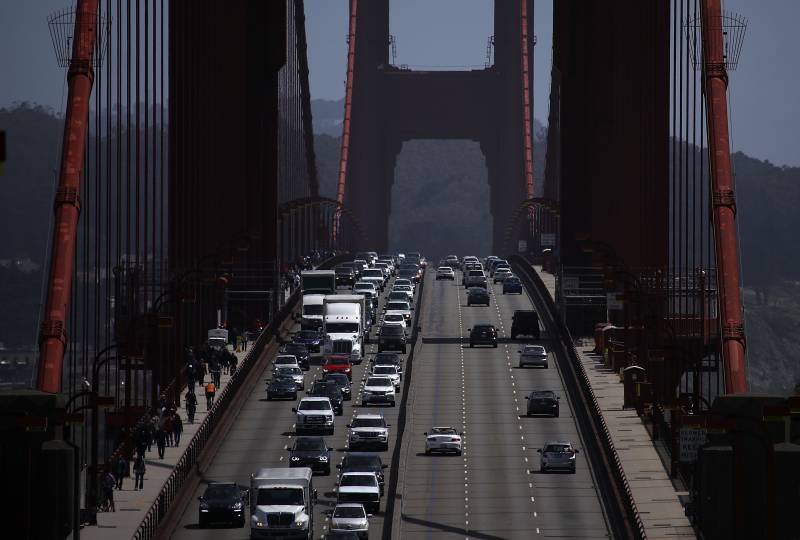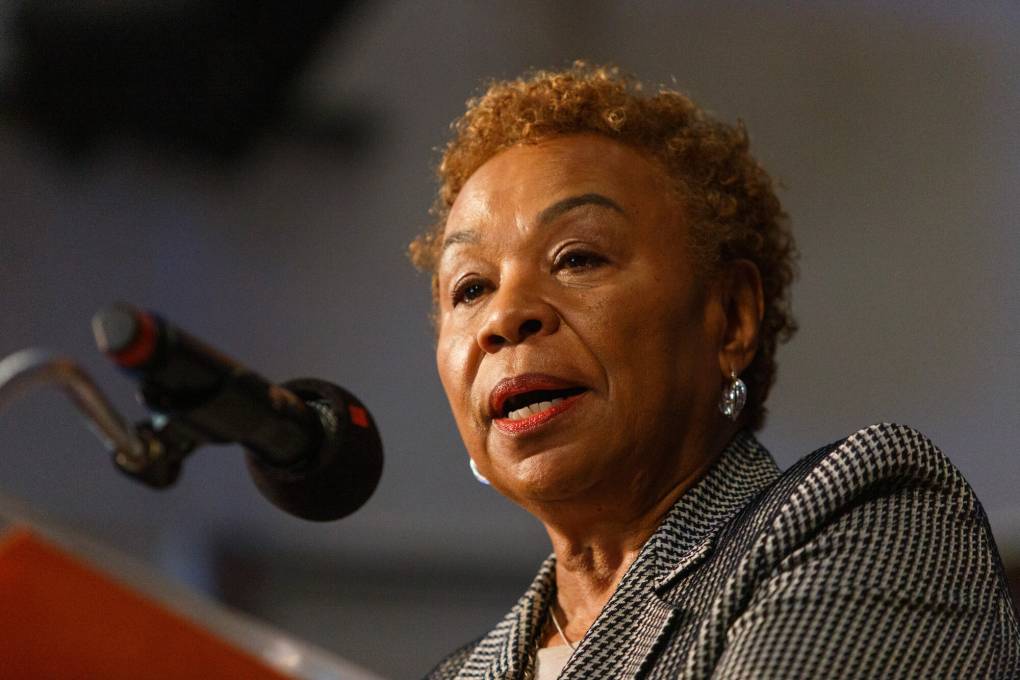Update, 2:30 p.m. Friday, Nov. 13: The Golden Gate Bridge, Highway and Transportation District board voted Friday to lay off 146 union workers in January as the agency struggles to deal with a fiscal crisis triggered by the coronavirus pandemic and a plunge in ridership.
The board voted after hearing more than an hour of comment from the district's bus drivers, ferry crew members, patrons and union leaders who sometimes pleaded with, sometimes demanded, that board members find some other way to close a deficit that agency management estimates at $48 million for this fiscal year.
"The proposal to lay off so many workers is an outrageous one," Frank McMurray, a 20-year veteran ferry deckhand, told the board. "The job of the bridge board and management is to be good shepherds, good stewards of the bridge, ferry and the bus. That certainly means preserving the bridge, preserving the ferry and preserving the buses, but it also means preserving the workers that make this whole thing work."
Michael Cornelius, a representative from the Amalgamated Transit Union's international office, joined other commenters in urging the board to consider spending some of its $220 million in capital reserves to avoid the layoffs and to wait to see whether the federal government under the Biden administration will provide new relief funds for transit agencies.
"You owe your employees who continue to work through this pandemic and risked their lives, you owe them," Cornelius said. "You owe them a couple months of patience. You owe them the chance to see what happens in 2021."
District management says the bridge agency has been losing $2 million a week through a combination of reduced toll revenue and fares from bus and ferry passengers. The agency says that despite deep services, the $50 million in federal emergency relief money the agency received last spring will run out by the end of this month.
The proposal put forward by Golden Gate General Manager and CEO Denis Mulligan envisioned eliminating 205 positions — including 146 current employees and 59 open jobs. The workers, including 88 bus drivers and 21 ferry deckhands, would be let go Dec. 5 with a four-week severance package and an extension of several months of medical benefits.
Management also put forward two other budget proposals that went largely undiscussed during the board's deliberations: a $2 dollar "COVID surcharge" toll increase to raise additional revenue or a $1.25 toll increase that would be combined with a 20% furlough pay cut for union workers.
Brian Sobel, a Sonoma County representative who chairs the board's finance committee, said directors were in "a horrible and difficult situation that puts our duties as directors at odds with our feelings of compassion for our employees." But he echoed statements from Mulligan that the agency has no choice but cutting spending or raising revenue and that spending capital funds was not an option.
"We don't have the right to hand out tollpayer and ratepayer money however we wish," Sobel said. "It doesn't belong to the board. We are ... stewards of the money, and we have a fiduciary responsibility to the tollpayers, ratepayers and taxpayers of our respective counties."
Ultimately, the board voted 11-5 to approve an amendment put forward by Sobel that delays the effective date of the layoffs until Jan. 4, 2021. The directors also approved the severance plan and a separate proposal that imposes furloughs equivalent to a 10% pay cut on the agency's management staff.
Original post, Thursday, Nov. 12: The COVID-19 pandemic has pushed the agency that runs the Golden Gate Bridge and its associated transit service into a fiscal corner where nearly all of the region’s public transportation operators may soon find themselves.



